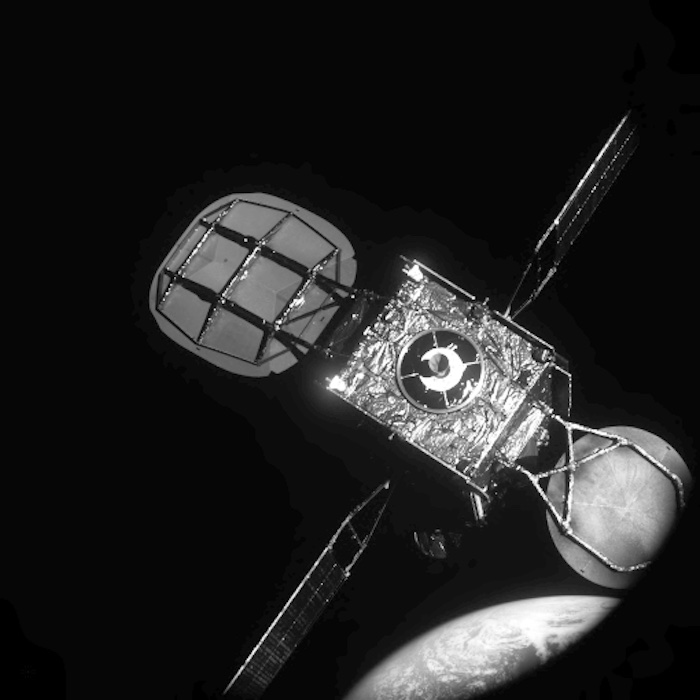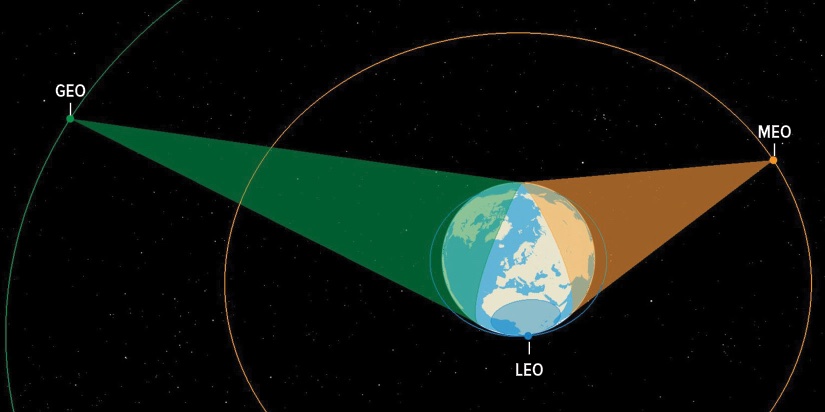Facing competition from Starlink and other emerging satellite broadband networks, the two companies that own most of the traditional commercial communications spacecraft in geostationary orbit announced plans to join forces Tuesday.
SES, based in Luxembourg, will buy Intelsat for $3.1 billion. The acquisition will create a combined company boasting a fleet of some 100 multi-ton satellites in geostationary orbit, a ring of spacecraft located more than 22,000 miles (nearly 36,000 kilometers) over the equator. This will be more than twice the size of the fleet of the next-largest commercial geostationary satellite operator.
The problem is that demand is waning for communication services through large geostationary (GEO) satellites. There are some large entrenched customers, like video media companies and the military, that will continue to buy telecom capacity on geostationary satellites. But there's a growing demand among consumers, and some segments of the corporate and government markets, for the types of services offered by constellations of smaller satellites flying closer to Earth.
The biggest of these constellations, by far, is SpaceX's Starlink network, with more than 5,800 active satellites in its low-Earth orbit fleet a few hundred miles above Earth. Each of the Starlink satellites is smaller than a conventional geostationary platform, but linked together with laser communication terminals, thousands of these spacecraft pack enough punch to eclipse the capacity of internet networks anchored by geostationary satellites. Starlink now has more than 2.6 million subscribers, according to SpaceX.
Satellites in low-Earth orbit (LEO) offer some advantages over geostationary satellites. Because they are closer to users on the ground, low-Earth orbit satellites provide signals with lower latency. The satellites for these constellations can be mass-produced at relatively low cost, compared to a single geostationary satellite, which often costs $250 million or more to build and launch.
"In a fast-moving and competitive satellite communication industry, this transaction expands our multi-orbit space network, spectrum portfolio, ground infrastructure around the world, go-to-market capabilities, managed service solutions, and financial profile," said Adel Al-Saleh, CEO of SES, in a statement announcing the acquisition of Intelsat.
A trend of consolidation
Some of the largest legacy operators in geostationary orbit have made moves over the last decade to respond to the new competition.
The only operational low-Earth orbit internet constellation besides Starlink was launched by OneWeb, which primarily sells capacity to existing internet providers, who then distribute services to individual consumers. This is in contrast to SpaceX's approach with Starlink providing services direct to homes and businesses.
Eutelsat, the third-largest operator of geostationary satellites, merged with OneWeb last year, creating a company with a blended offering of GEO and LEO services. Viasat, a pioneer in satellite internet services using dedicated spacecraft in geostationary orbit, last year purchased Inmarsat, which specialized in providing connectivity to airplanes and ships.
SES's acquisition of Intelsat stands apart due to the size of their satellite fleets. Founded in 1985, SES currently operates 43 geostationary satellites, plus 26 broadband spacecraft in medium-Earth orbit (MEO) a few thousand miles above Earth. These MEO satellites operate in a kind of middle ground between LEO and GEO satellites, offering lower-latency than geostationary networks, while still flying high enough to not require hundreds or thousands of spacecraft to blanket the globe.
Intelsat has 57 geostationary satellites, primarily for television and video relay services. Al-Saleh said the combined company will offer coverage over 99 percent of the world, and provide services through a range of communication bands. For now, LEO broadband satellites in the Starlink and OneWeb networks beam signals to user terminals in Ku-band.
Al-Saleh said the combined networks of SES and Intelsat will span Ka-band, Ku-band, X-band, C-band, UHF, and secure bands tailored for military use. "That gives us a unique position in the market place to be able to deliver to our clients," he said.
SES and Intelsat have 13 new satellites on order, including six GEO spacecraft and seven broadband MEO satellites. Intelsat also brings to the table access to OneWeb's LEO constellation. Earlier this year, Intelsat announced it reserved $250 million of capacity on OneWeb's network over the next six years, with an option to purchase double that amount.
"We will create a stronger expanded network capabilities that are multi-orbit," Al-Saleh said in an earnings call Tuesday. "We are not just a GEO player. We are an all-orbit player."
Internet signals coming from a GEO satellite, like a Viasat spacecraft, typically have a latency of about 600 milliseconds. Al-Saleh said SES's O3b network in medium-Earth orbit provides signals with a latency of about 120 milliseconds. According to SpaceX, Starlink latency ranges between 25 and 60 milliseconds.
A satellite pioneer
Intelsat has a storied history. Founded in 1964 as an intergovernmental organization, Intelsat operated the first commercial communications satellite in geostationary orbit. It became a private company in 2001, then went public in 2013 before filing for bankruptcy in 2020. Intelsat emerged from bankruptcy proceedings as a private company in 2022.
“Over the past two years, the Intelsat team has executed a remarkable strategic reset," said David Wajsgras, CEO of Intelsat, in a statement. "We have reversed a 10-year negative trend to return to growth, established a new and game-changing technology roadmap, and focused on productivity and execution to deliver competitive capabilities."
SES and Intelsat expect the acquisition to close in the second half of 2025, pending regulatory approvals. The boards of both companies unanimously approved the transaction.
Both companies maintain hundreds of millions of dollars of business with the US government each year, and the military's appetite for commercial satellite communications is going up. "I think many of the satellite players are seeing the benefit of that, not just us," Al-Saleh said. "You can look at our competitors. You can look at Starlink. You can look at others. We're all seeing an uptick in demand."
Al-Saleh said he doesn't foresee any roadblocks from the Pentagon or any government regulators before closing the transaction next year.
SES and Intelsat revealed last year there were in talks to combine. According to Al-Saleh, SES looked at multiple opportunities for mergers or acquisitions to make use of a multibillion-dollar windfall from the Federal Communications Commission tied to the auction of C-band satellite spectrum for cellular networks.
“It was clear to us that this particular transaction, if we’re able to successfully close it with the right type of value, is the most compelling proposition we had on the table," he said.



3175x175(CURRENT).thumb.jpg.b05acc060982b36f5891ba728e6d953c.jpg)

Recommended Comments
Join the conversation
You can post now and register later. If you have an account, sign in now to post with your account.
Note: Your post will require moderator approval before it will be visible.